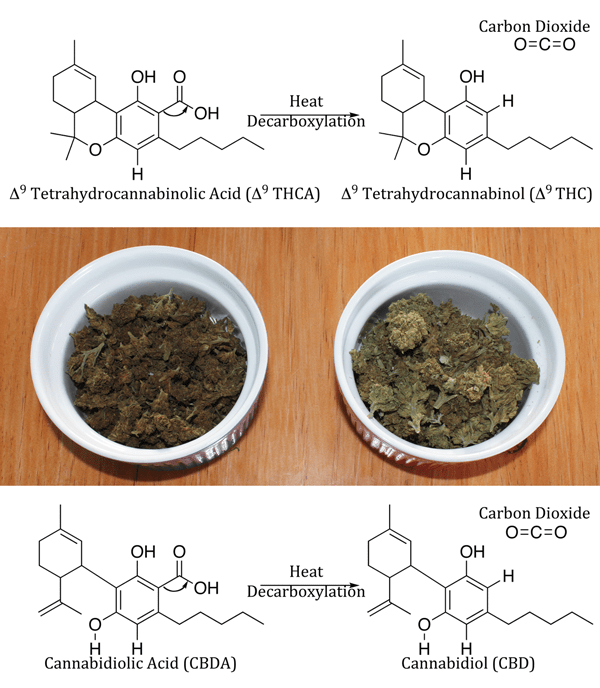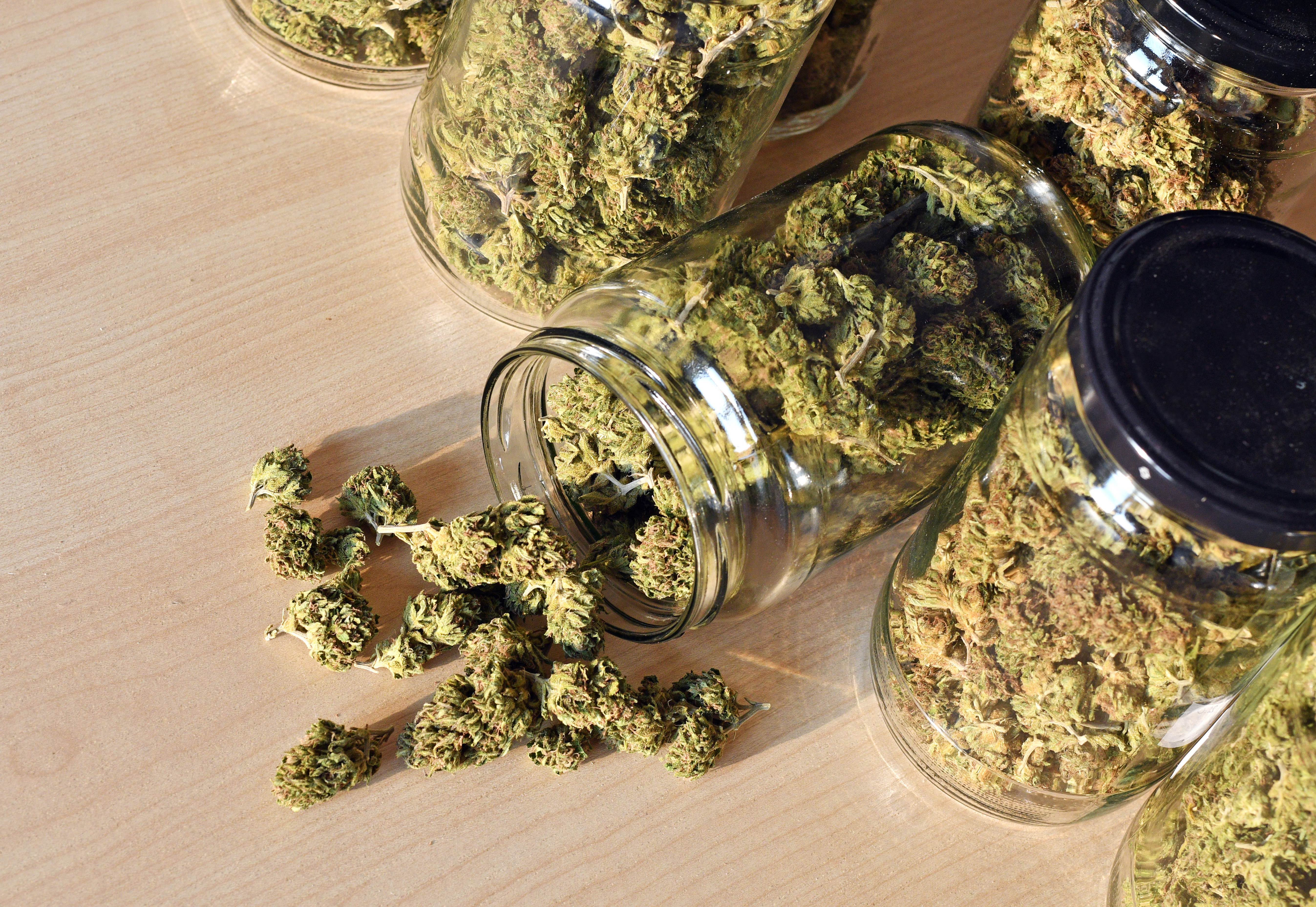What is Decarboxylation?
Decarboxylation is a chemical reaction which removes a carboxyl group and releases carbon dioxide (CO2).

Why should cannabis enthusiasts and medical patients care?
If you want to catch a buzz or medicate from your cannabis flower, you need to decarboxylate it because believe it or not, the raw cannabis plantcontains no THC.
Raw cannabis contains the acidic form of this cannabinoid, THC-A (Tetrahydrocannabinolic Acid), which won’t get you high or medicated. It takes the process of age and/or adding heat to decarboxylate cannabis and convert the THC-A into the psychoactive ingredient THC (Tetrahydrocannabinol).
Cannabinoids contained in raw cannabis flower has an extra carboxyl ring or group (COOH) attached to their chain, so decarboxylation works with so much more than just THC. Learn about all the activation temperatures and elements to THC and more with my FREE My Temperatures & Effects Chart.
What Causes Decarboxylation?
Time and heat are the two main catalysts that cause decarboxylation but let’s be honest, it’s mostly heat. It’s true that over time, some decarboxylation will occur, but not a whole lot. This is why some raw flowers will lab test positive for some THC, although THC-A will be far more prevalent.
When you smoke or vape marijuana, decarboxylation naturally occurs due to the heat of the flame or heating element. According to expert Shanel Lindsay, inventor of the Ardent Decarboxylater, smoking or vaping flowers that have been decarboxylized first will up your high’s potency!
You might also come across the term “activate” the cannabis, which also means to decarboxylate it.
Why You Should Decarboxylation?
Besides the fact that you need decarboxylation if you want to get high from your cannabis/meds, it also unlocks the full medicinal potential of other cannabinoids, such as CBDs, CBNs, and CBGs. Now to be sure, the acidic form of all these cannabinoids also have important medicinal benefits, so if a high is not important to you, full decarboxylation may not be either.
So what do I mean when I say “full decarboxylation?” This would mean you are converting 100% of the THC-A in your plant material into THC. This is nearly impossible for reasons I’ll discuss in the next section, but know that usually some is left unconverted.
Does it matter? To a degree yes, but in my opinion not as much as a lot of people think it does. I say this because unless you are ultra sensitive to THC you probably are not going to notice a few points difference. And the THC-A left unconverted is imparting health benefits, so it’s not a big loss.
I also say this because, long before lab tests showed that decarbing before making slow cooking infusions like butter and oil increases potency, we still made some potent AF infusions. Many people still do not bother to decarb before making these infusions and still get great results.
That said, most people do want to get as much potency as possible from their cannabis, so they are going to want to convert as much THC-A into THC as possible, which means they are going to want to know how to decarboxylate their marijuana. And not just flowers – kief, hash, and hash oils all benefit from decarboxylation as well.
What types of marijuana need to be decarboxylated?
Marijuana in most of its forms will benefit from decarbing. Of course flowers/buds and trim, but also kief, and hash. Most hash oils have not been decarbed either, so if you cook with these, know that you will want to decarb first.
